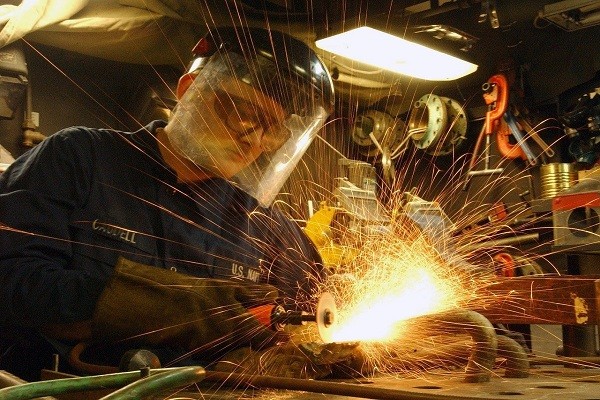Protecting your face is crucial when working in hazardous environments, particularly in workshops that involve grinding or cutting tasks. If your job exposes you to such risks, using proper protective gear—like a high-quality face shield for grinding—is not just recommended, it’s essential.
A reliable face shield can safeguard you from dangerous materials such as flying debris, chemical splashes, and other harmful particles. Unfortunately, many workers have suffered serious injuries and facial scarring simply because they neglected to wear adequate face protection. Don’t take the risk—make face shields a standard part of your safety gear.
Best Face Shield For Grinding Reviews
1. Honeywell S8510 Uvex Bionic Face Shield For Grinding

2. Sellstrom S30120 Advantage Series All-Purpose Face Shield For Grinding
3. 3M Ratchet Headgear H8A 82783-00000 Face Shield For Grinding

4. Lincoln Electric K3750-1 OMNIShield Professional Face Shield 
5. Jackson Safety 14200 Lightweight MAXVIEW Premium Face Shield For Grinding

Why Use a Face Shield for Grinding?

Grinding produces high-speed particles that can cause significant injuries to the face and eyes. A quality face shield acts as the first line of defense against:
-
Flying debris and sparks
-
Grinding wheel fragments
-
Metal filings and dust
-
Chemical splashes (in certain environments)
Even when wearing safety glasses or goggles, your face remains vulnerable. A face shield covers the full face, including the eyes, nose, mouth, and jaw, offering enhanced protection during grinding operations.
Key Features to Look For
When selecting a face shield for grinding, look for the following critical features:
High-Impact Resistance
The visor should be made from polycarbonate or acetate, materials known for their ability to withstand high-speed impacts. ANSI Z87.1+ compliance is essential for verifying safety.
Full-Face Coverage
Choose a shield that extends from the forehead down past the chin and wraps around the sides to guard against flying particles from all angles.
Comfortable Headgear
Look for adjustable ratchet headgear with padding. Features like the 370 Speed Dial or rear swivel bands enhance comfort during long tasks.
Anti-Fog and Scratch Resistance
Go for models with anti-fog and hard-coat finishes to maintain visibility in humid environments and protect against scratches.
Replaceable Visors
A replaceable lens system saves money over time and allows you to switch between clear, tinted, or shaded visors depending on your task.
Types of Face Shields for Grinding

Clear Polycarbonate Shields
The most common type, offering clear visibility and excellent impact resistance.
Tinted or Shaded Shields
Ideal for work environments with bright lighting or for light welding/grinding combinations.
Integrated Chin and Side Guards
Offers superior protection by covering more facial area from potential splashes or shrapnel.
Full-Face Respirator Face Shields
Combines respiratory protection with a face shield—great for environments with dust or chemical exposure.
Common Mistakes to Avoid
-
Relying solely on safety glasses – Always pair them with a face shield when grinding.
-
Wearing a scratched or foggy shield reduces visibility and increases risk.
-
Improper fitting – A loose shield can shift, exposing areas of your face.
-
Using non-rated equipment – Always ensure your shield meets ANSI Z87.1+ standards.
 Frequently Asked Questions
Frequently Asked Questions
1. Why do I need a face shield when grinding?
A face shield provides full-face protection against flying debris, sparks, and metal fragments generated during grinding. Unlike safety goggles, which only protect the eyes, face shields cover the entire face, including the nose, mouth, and chin, minimizing the risk of injury from high-speed projectiles.
2. Can I use a face shield alone without safety glasses underneath?
No. ANSI standards and OSHA regulations require face shields to be worn in combination with safety glasses or goggles. Face shields protect against impact, but they don’t seal the eyes, so smaller particles can still enter around the edges. Layering both ensures optimal safety.
3. What material is best for a grinding face shield?
Look for shields made from polycarbonate, which offers high impact resistance and clear visibility. Some models also have anti-fog and scratch-resistant coatings for improved durability and long-term use. Avoid acrylic for grinding—it’s less impact-resistant and can shatter more easily.
4. Are all face shields adjustable for different head sizes?
Most quality face shields come with ratcheting headgear systems that adjust for a custom fit. Look for models with multiple adjustment points, padded headbands, and tilt features for comfort during extended wear. Models like the Jackson Maxview or 3M H8A offer excellent adjustability.
5. How do I maintain or replace my face shield visor?
Clean your face shield with mild soap and water or an approved lens cleaner—never use harsh solvents that could degrade the material. If the visor becomes scratched, warped, or hazy, replace it promptly. Most professional models allow easy visor replacement without tools.
Bottom Line
Choosing the right face shield for grinding isn’t just about compliance—it’s about safety, comfort, and long-term productivity. Whether you’re grinding metal in a shop or on a job site, don’t compromise on facial protection. With the right face shield, you can work confidently, knowing you’re protected from serious hazards.
Related Resources:
- Best Face Mask For Sun Protection Reviews
- Best Respirator For Spray Painting Reviews
- Industrial Safety Helmet vs Hard Hat: What Are the Differences?
- Top 5 Full Brim Hard Hats for Construction and Landscaping
- Clear or Tinted Safety Glasses: Which Is The Best?
